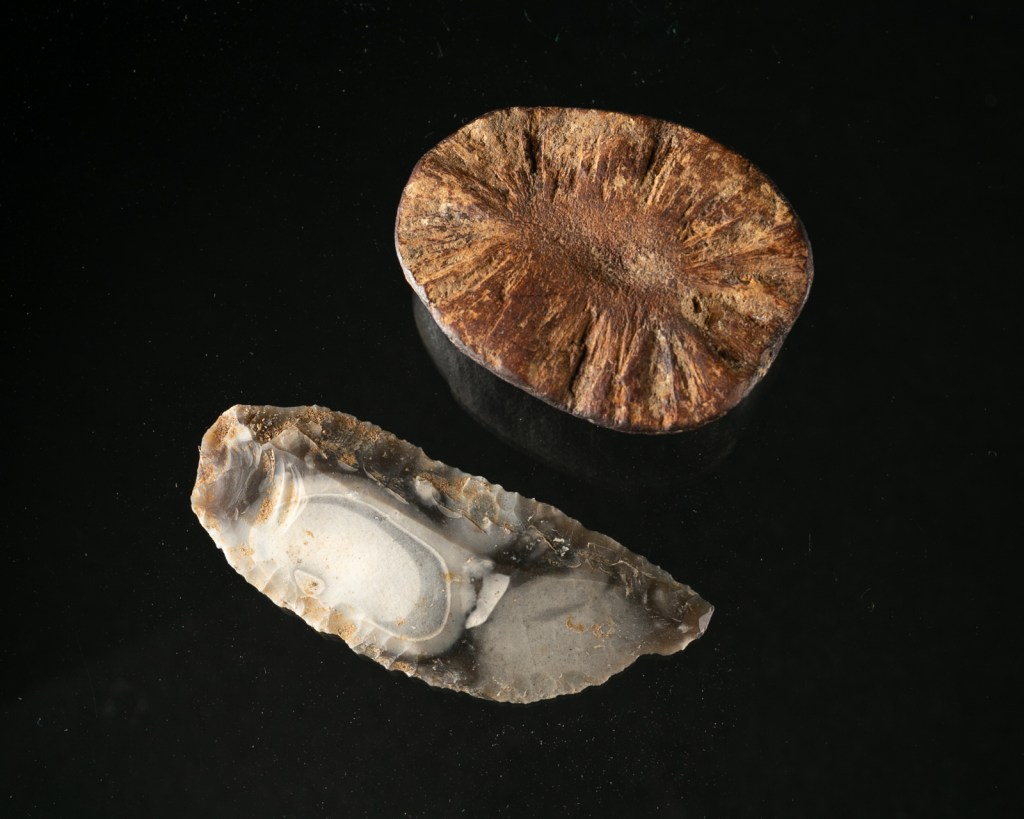
The Bronze Age vessel we found in April at Cholsey has now been micro-excavated, with potentially fascinating results.
The beautifully decorated cremation urn was found deliberately buried in the centre of a droveway running through the site in Oxfordshire as an apparent votive offering.
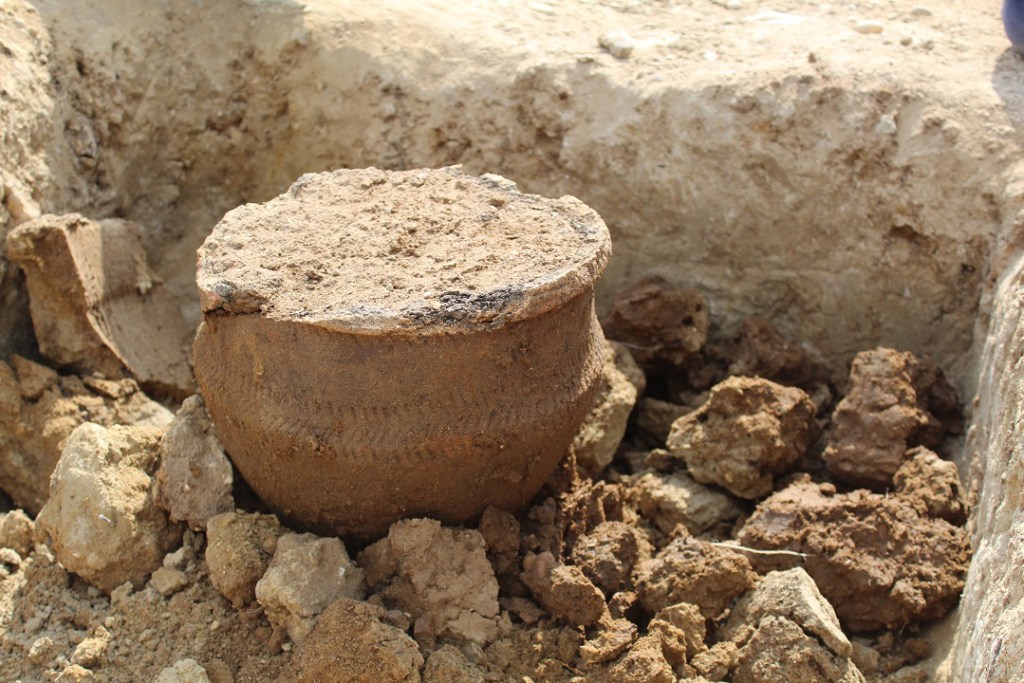
Scans confirmed it held a cremation, and the precise 3-dimensional model produced was used to inform our micro-excavation and sub-sampling strategies. The radiographer identified a possible metal object in the urn so we were excited to see what this might be!
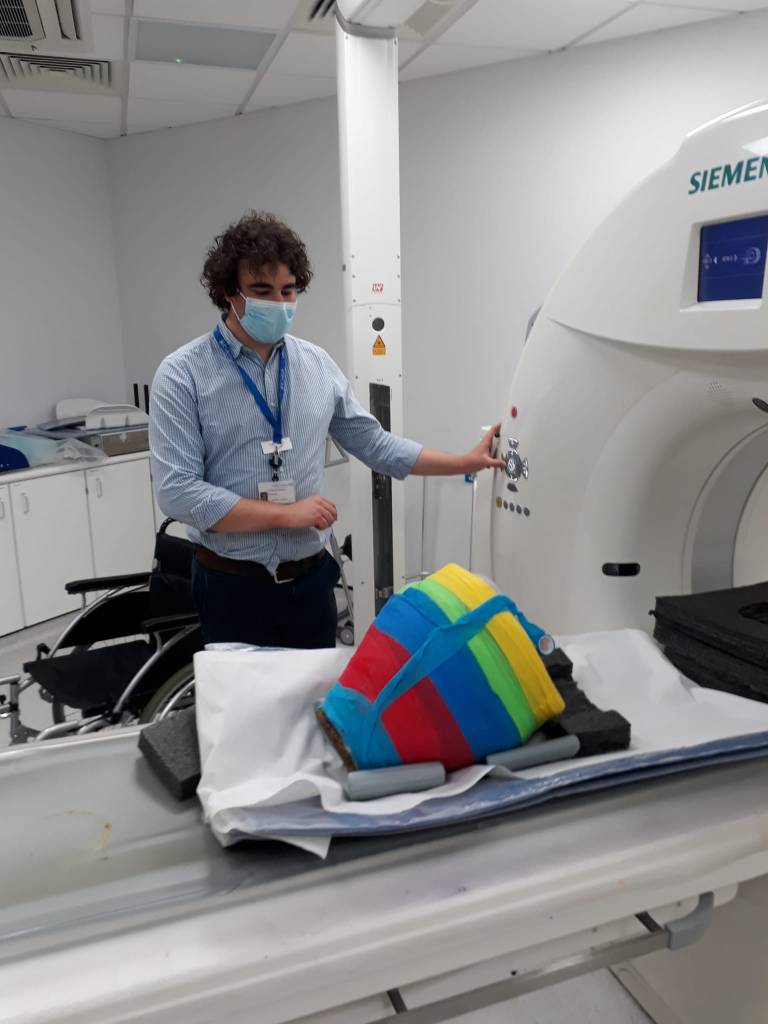
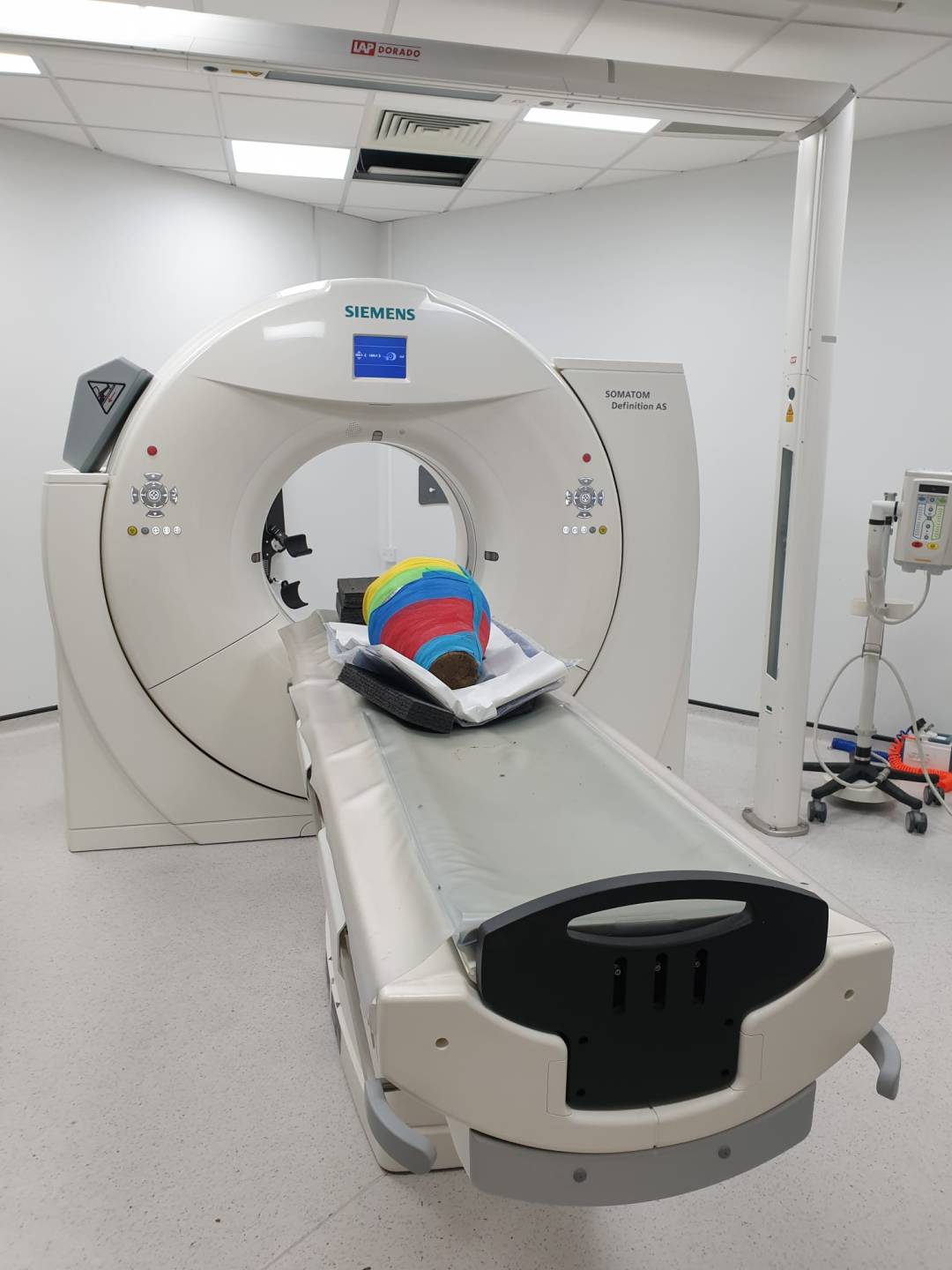
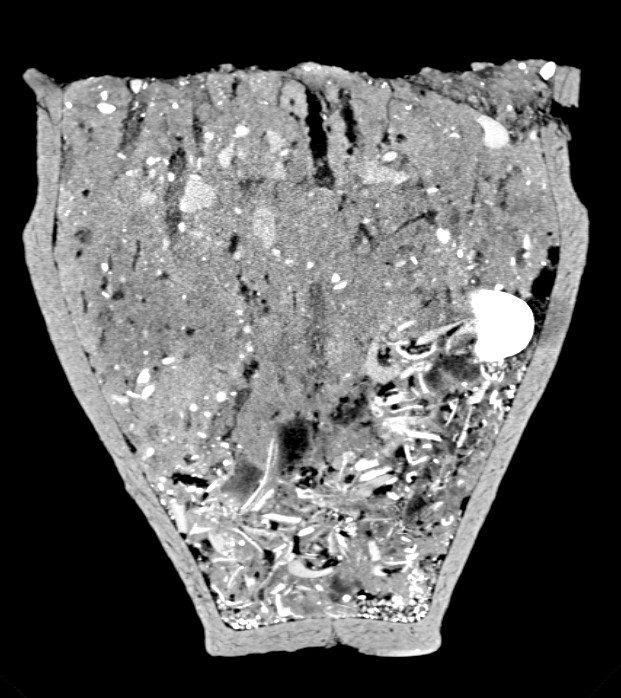
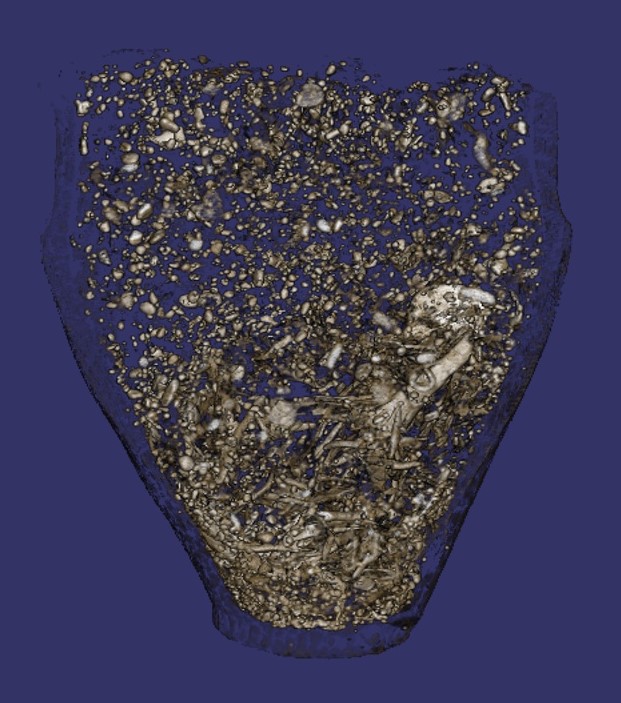
.
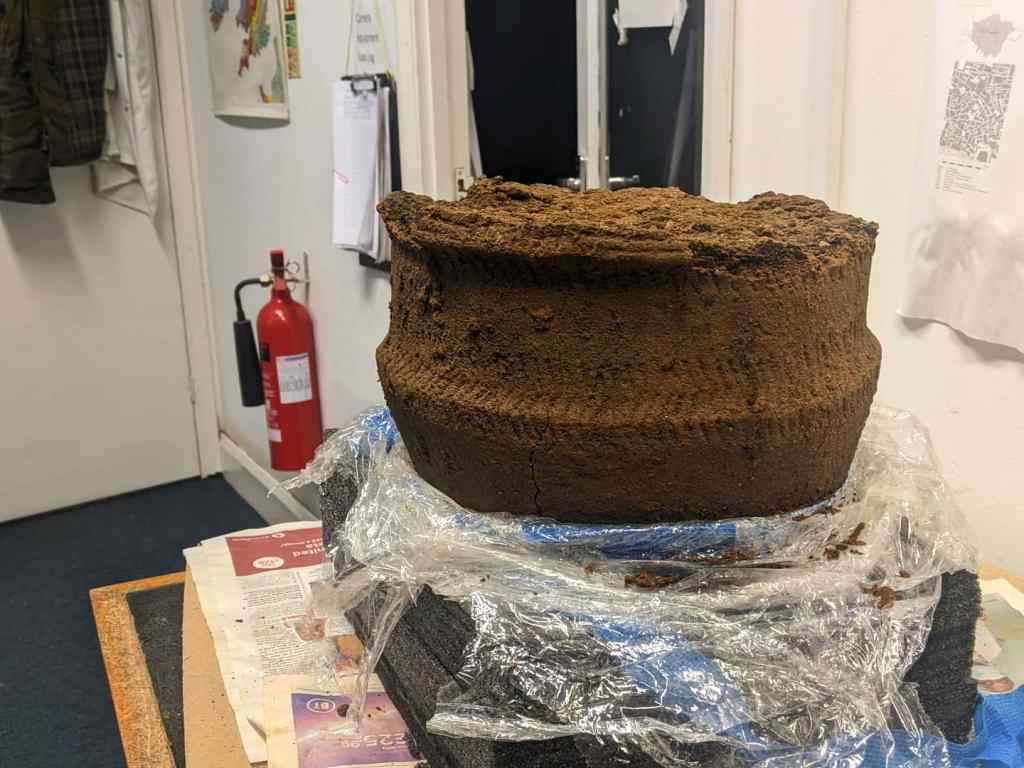
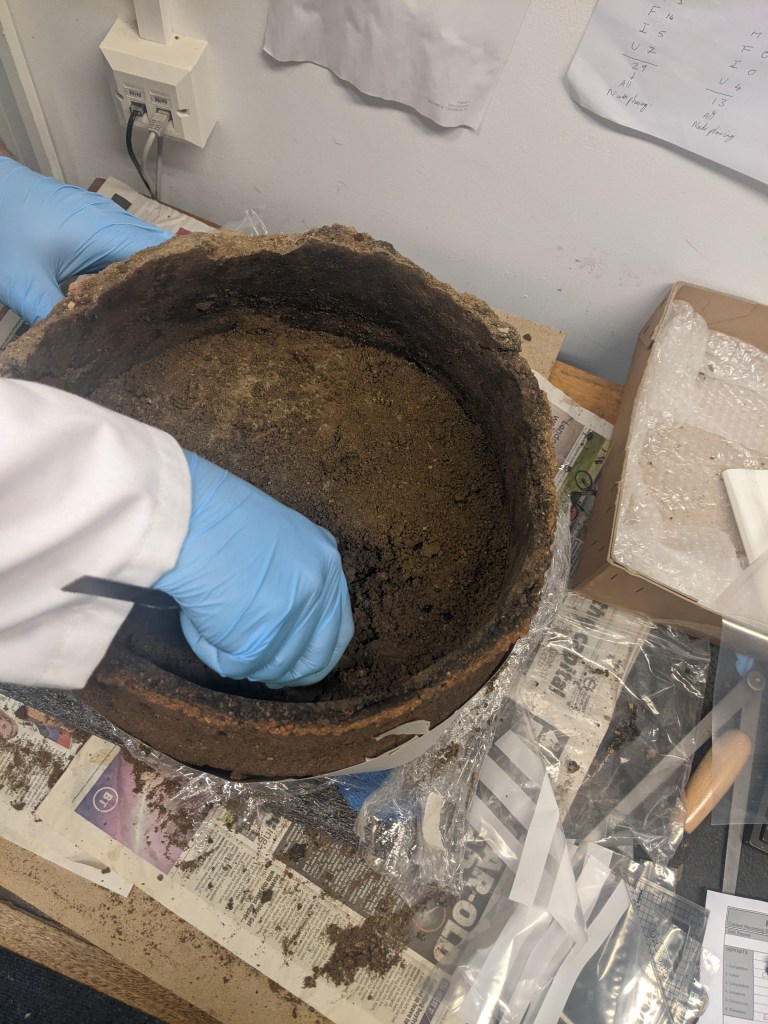


The ‘metal’ object turned out to be a very dense pebble of pyrite, a mineral named after the Greek ‘pyr’ meaning ‘fire’. The urn also contained a piece of struck flint – a plano-convex knife with semi-invasive retouch around all edges. These types of implement were frequently used as grave goods during the Early Bronze Age, this one having been placed after the cremation process with the deceased’s ashes by the mourners. They seem to be quite personal objects and may even acted as a kind of insignia or token of their identity – interestingly this one doesn’t seem to have been used very much and may even have been made specially for the funeral. It is particularly impressive as it seems to have incorporated, or been crafted around, the oval inclusion in the middle which makes it even more striking!

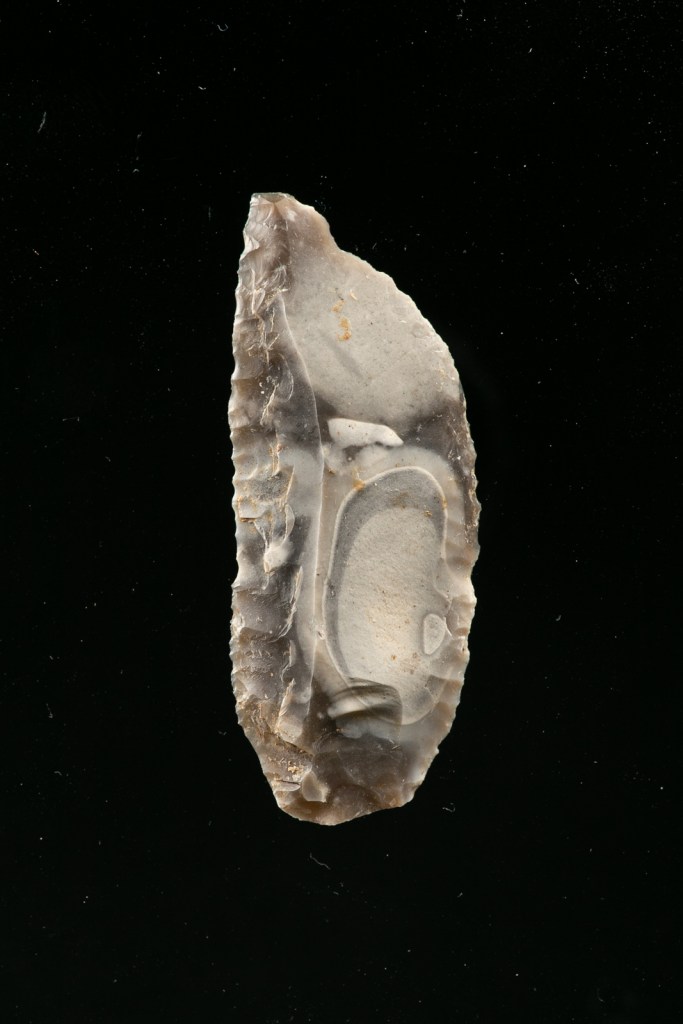
Together these two items raise the exciting and fascinating possibility that they could form part of a strike-a-light, or ‘fire-kit’, attested to in prehistoric mortuary contexts throughout Britain. There is the suggestion of a use-notch on one end of the stone and the rough split edge would produce sparks when struck the flint; these types of knives are known to have been used to make fire in this way.
Strike-a-light kits consisted of a ‘striker’ – a piece of flint, a ‘strike-stone’ – an ironstone such as this and tinder, for example moss, which depending on soil conditions may leave no trace. Evidence suggests that these kits occur most frequently with the burial of adult males; additionally they’re often known to be associated with high-status burials. They have been argued to be symbolic inclusions in a cremation, rather than related to their use, which could explain the minimal wear patterns so far observed.
However, these artefacts will now undertake the next stage of their journey: closer examination by our lithics and stone specialists who may be able to shed more light on the matter! We’ll keep you posted!
